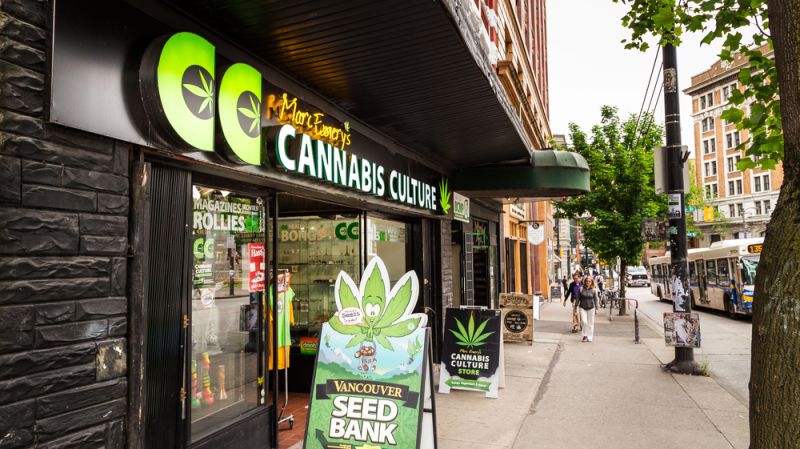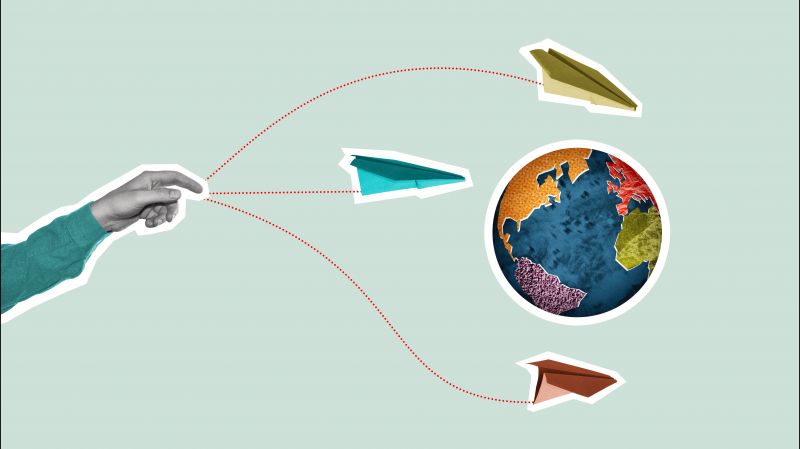Reefer Responsibility: Where’s the Sweet Spot?
With the cannabis market set to open, entrepreneurs and policymakers search for lessons from booze and gambling trailblazers

The dawn of the recreational marijuana industry in Canada is fast approaching, with full legalization expected by July 2018. With an estimated value of $23 billion, the industry will present new opportunities in many areas of the economy, from retail and transportation to tourism.
But, like other “sin” industries, the cannabis trade carries its own set of risks relating to social impact. How can federal and provincial governments and the new companies rushing into the market manage and mitigate these risks in the public interest?
Fortunately, cannabis entrepreneurs and policymakers can learn from the experiences of regulating alcohol and gambling. Speaking recently to the Smith Business Club in Toronto at an event co-sponsored by the Centre for Social Impact, regulatory and industry experts laid out how cannabis — and any other industry dealing in substances with a potential for harm — can successfully balance profit and integrity.
Before Tackling Solutions, Accurately Assess Harm
The first step in managing risky products is to accurately assess their potential harm to consumers, a challenge that is more difficult than it might seem. Gambling, for instance, remains far more stigmatized than drinking — despite a higher prevalence of problem drinkers and a much higher incidence of harm. In fact, in 2016 alone, more Canadians were hospitalized for conditions directly caused by alcohol consumption than they were for heart attacks, and the Public Health Agency of Canada says alcohol is one of the leading causes of injury and death.
Yet alcohol has become so normalized within our culture that we often underestimate its harms, don’t seek out further information on it, and stigmatize those who shy away from it. Gambling, on the other hand, remains stigmatized. People consistently overestimate the harm it causes: it is generally thought that 8 to 12 percent of the general population are problem gamblers when, in reality, only 1.2 percent are. (A fifth of Canadians, on the other hand, report alcohol consumption levels that classify them as heavy drinkers.)
The result? We overestimate the dangers of gambling and severely underestimate the harms caused by alcohol.
“That perception — the stigma and the attitude seen towards it — affects the kind of response from government, the kinds of controls you have to build into your business, and how you deal with this in society,” Paul Pellizarri, the executive director of Social Responsibility at the Ontario Lottery and Gaming Corporation, told the panel. “You can't start to look at what the solutions are until you have evidence that's sound and is credible about the actual risks.”
For all industries that deal with risky products, that means first drawing from a large number of credible sources — speaking to addiction experts, studying behaviour and consumption, learning where the risks are — and only then taking tangible steps towards solutions.
Start with Consumers
The first step in crafting a solution starts with consumers. No matter what “sin” the government is dealing with, one of the most effective ways to reduce harm on a long-term basis is public education, starting at an early age.
“There’s the carrot and the stick when it comes to this kind of stuff,” Michelle Hynes-Dawson, vice-president of Corporate Responsibility and Reputation at the Alberta Gaming and Liquor Commission, told the panel. And while regulation and enforcement certainly have their roles to play in harm reduction, the most significant step in prevention needs to happen long before regulation comes into play, in the form of education.
We overestimate the dangers of gambling and severely underestimate the harms caused by alcohol in our society
Consider the success story of liquor consumption. Today’s generation of young adults are far less likely to drink and drive, for instance, than those who came a decade before them, with a 38 percent drop from 2002 to 2014 in number of young adults driving under the influence. And while roadside alcohol checks played their part in that change, most experts attribute the drop to a societal shift in values, largely due to educational campaigns and the work of organizations such as Mothers Against Drunk Driving.
When it comes to introducing recreational marijuana, Brian Polsinello, president of cannabis startup Tokyo Smoke, said there are two factors that will make education about cannabis easier. Not only are cannabis consumers more likely than either drinkers or cigarette smokers to research the substances they consume, but Canadians as a whole are growing increasingly health conscious. That combination makes for a very receptive society that’s eager to learn.
“The [cannabis] market is being created in a world where people just expect more,” Posinello said. “Part of the reason why legalization is so exciting, is because there is that opportunity to educate in a way that doesn't exist. To allow for a safe industry. To prevent the harm before it's something that we need to solve.”
Build Harm Reduction into Business Model
Even with excellent educational campaigns in place and a receptive society, however, there will always be some inherent social harm in the sin industries. That’s where businesses need to lead the way in building harm reduction into their business models.
In the past, Pellizarri said, the gambling industry largely ignored its social responsibility towards its consumers. “Anyone who was associated with the industry didn’t really have an interest or a stake in actually dealing with these issues,” he said. “They’d say, well, you’re making money from them.”
Casino operators have built harm reduction into the business model by integrating advice from addiction experts and studying player behaviours
Now, however, industries have come to appreciate that harm reduction actually helps create more sustainable businesses, filled with long-term, recreational consumers. For gambling, building harm reduction into the business model has meant integrating advice from addiction experts and studying player behaviours. Today, casino employees are trained to recognize “red flag signs,” and gambling centres partner with specific organizations and researchers. Referral centres are set up on-site so that those struggling with addiction can be directed towards help, and online gambling sites now have algorithms in place that can recognize problem behaviour and recommend support systems.
A good example of business’ social responsibility, Pellizarri told the panel, comes from the automobile industry. To increase safety, governments could have capped car speeds at 75 kilometres an hour — “but we don’t want that as a society,” Pellizarri said. Instead, companies designed safety features into their vehicles, and that’s precisely how the sin industries need to function, as well.
Work Closely with Regulation, Enforcement
The final piece of the puzzle is “the stick.” “As long as there is abuse,” said Hynes-Dawson, “there will be enforcement.”
The government’s role in this is giving consumers and businesses a regulatory framework to operate within, such as no selling to minors, needing to make food available if you’re selling liquor, and setting consistent blood alcohol level limits (and soon, THC blood levels). The onus is also on federal and provincial enforcement agencies to make sure those who step outside established limits are punished.
The further Canada comes in its approach to regulating the sin industries, however, the more it’s come to rely on partnerships and education first. “If it’s just the stick all the time, we’re seeing that it’s not really as effective,” Hynes-Dawson said. “We need to be educating everybody involved so that they’re part of the solution and raising awareness, so that people want to go to establishments where they’re safe.”
When industries use that three-pronged approach — working closely with enforcement agencies, tackling education early on, and creating businesses that thrive off healthy consumers — harm reduction is built into the entire system. And for everyone involved in this new industry, the chance to start fresh and get it right is incredibly exciting.
“With alcohol, we’re trying to fix or improve [past regulation to reduce current social harms],” said Polsinello. “With cannabis we’re starting from a white piece of paper.”
— Kenza Moller





